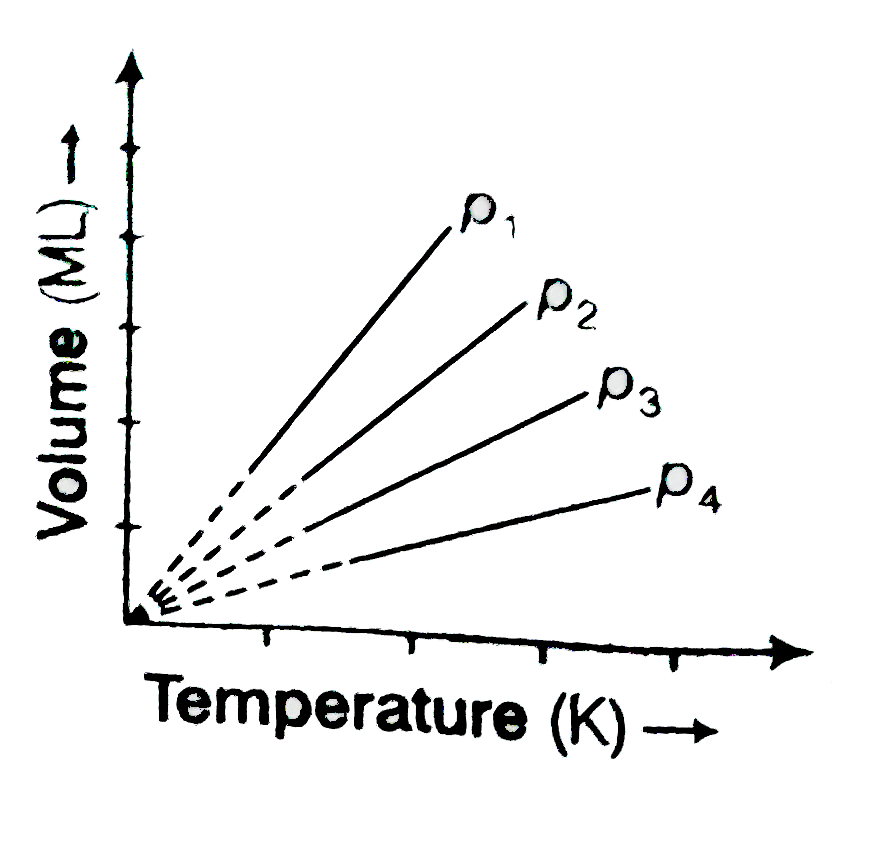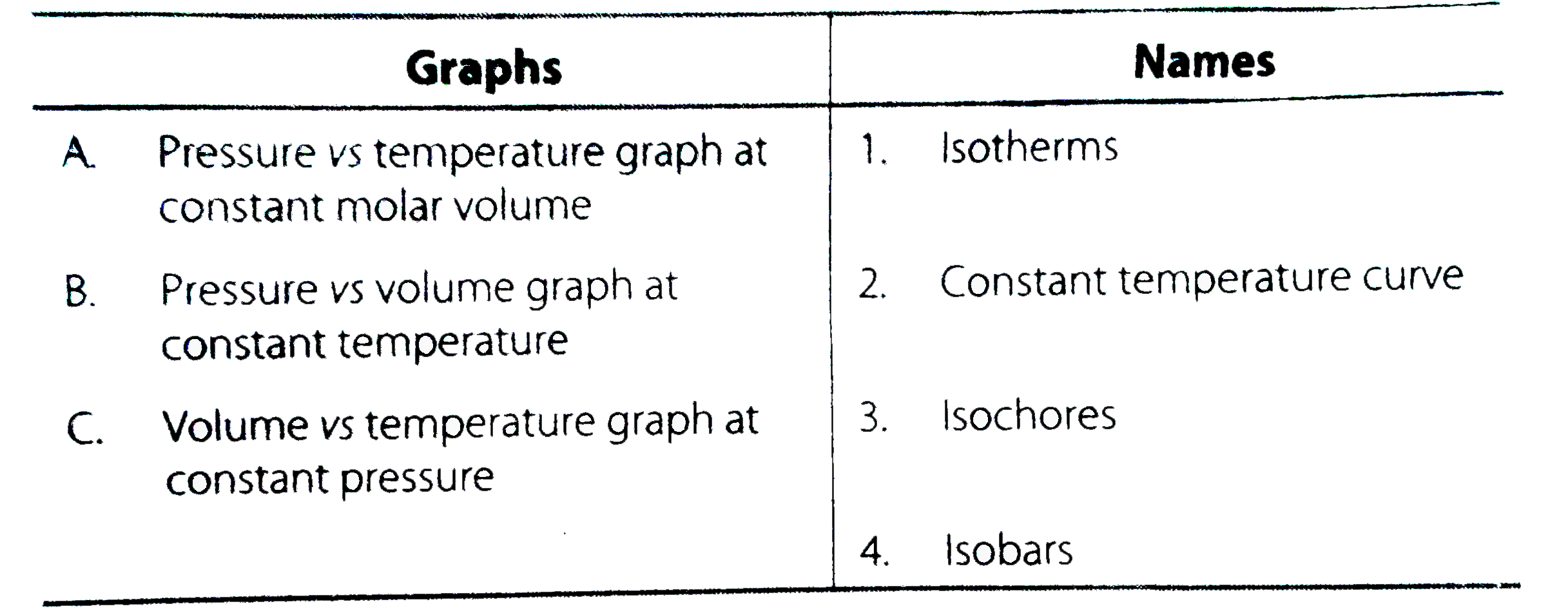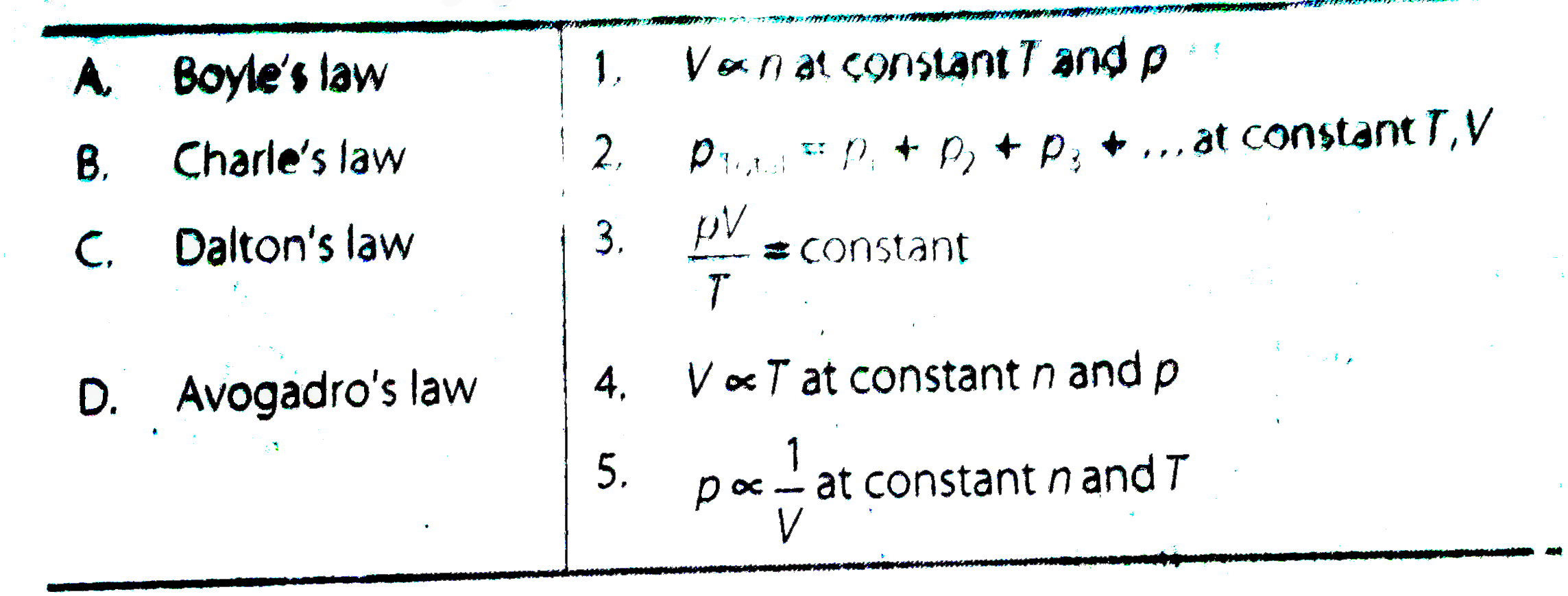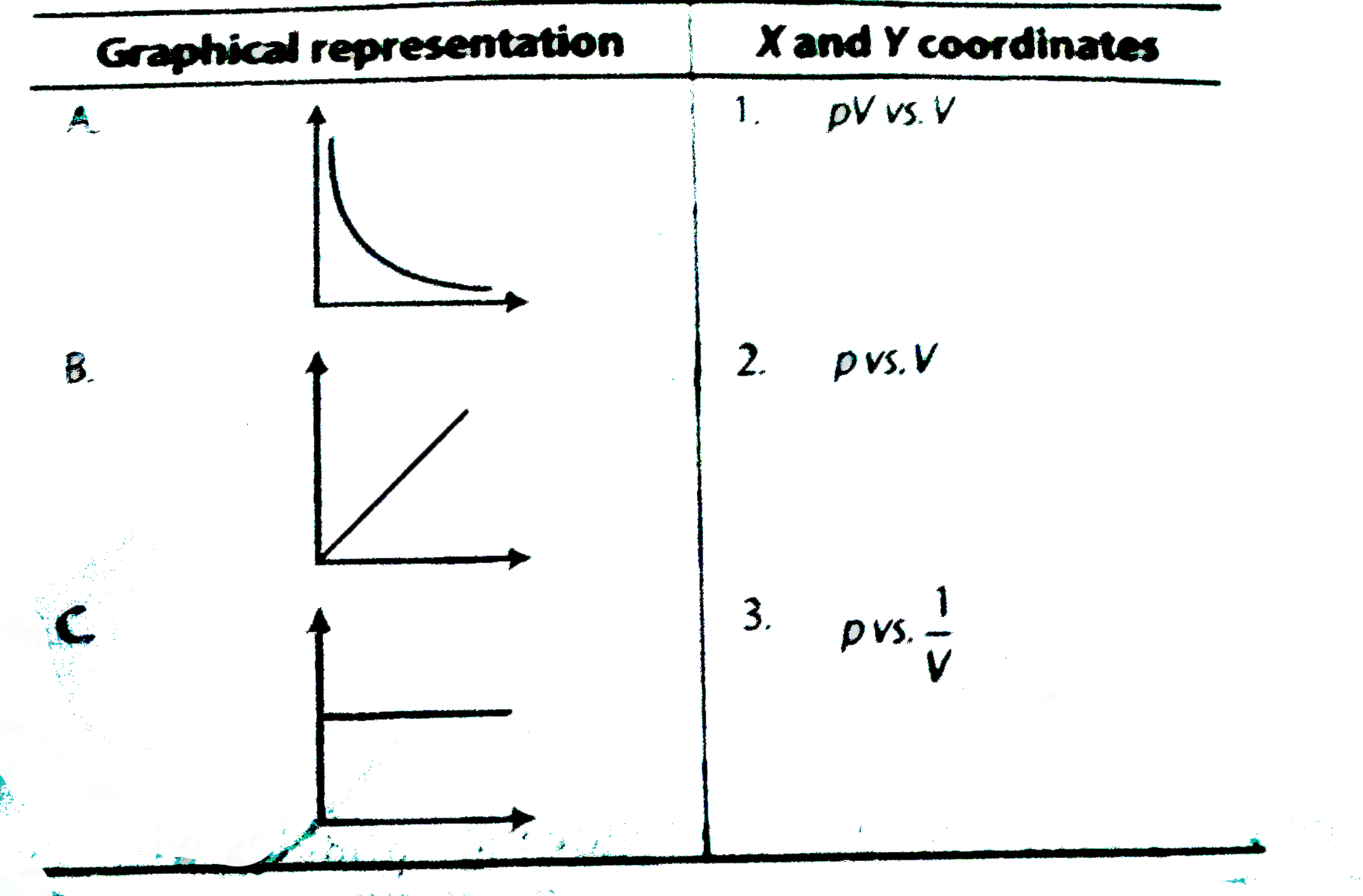MCQ More Than One Option from NCERT CHEMISTRY (ENGLISH) STATES OF MATTER for Class 11
| Class 11 | CHEMISTRY |
| Chapter | STATES OF MATTER |
| NCERT CHEMISTRY (ENGLISH) | MCQ More Than One Option |
| Medium | English |
| Academic Year | 2023-2024 |
Question 8
Gases posses characteristic critical temperature which depends upon the magnitude of intermolecular forces between the particles. Following are the critical temperatures of some gases.
GasesH2HeO2N2Critical temperature in kelvin33.25.3154.3126
From the above data what would be the order of liquefaction of these gases ? Start writing the order from the gas liquefying firstView SolutionQuestion 21
Use the information and data given below to answer the question (a) to (c),
Stronger intermolecular forces result in higher boiling point.
Strength of London forces increases with the number of electrons in the molecule.
Boiling point of HF,HCl,HBr and HI are 293 K, 189 K, 206 K and 238 K respectively.
(a) which type of intermolecular forces are present in the molecules HF,HCl,HBr and HI ?
(b) Looking at the trend of boiling points of HCl,HBr and HI, explain out of dipole-dipole interaction and London interaction, which one is predominant here.
(c) Why is boiling point of hydrogen fluoride highest while that of hydrogen chloride lowest ?View SolutionQuestion 24
Two different gases 'A' and 'B' are filled in separate containers of equal capacity under the same condition of temperature and pressure. On increasing the pressure slightly the gas 'A' liquefies but gas B does not liquify even on applying high pressure until it is cooled. Explain this phenomenon.View SolutionQuestion 34
For real gases the relation between p, V and T is given by c=van der Waal's equation
(p+an2V2)(V−nb)=nRT
where, 'a' and 'b' are van der Waal's constanrs, 'nb' is approximately equal to the total volume of the molecules of a gas. 'a' is the measure of magnitude of intermolecular attraction.
(i) Arrange the following gases in the increasin order of 'b'. give reason.
O2,CO2,H2,He
(ii) Arrange the following gases in the decreasing order of magnitude of 'a'. Give reason.
CH4,O2,H2View SolutionQuestion 35
The relation between pressure exerted by an ideal gas (pideal) and observed pressure (preal) is given by the equation,
pideal=preal+an2V2
(i) If pressure is taken in NM−2, number of moles in mol and volume in m3, calculate the unit of 'a'.
(ii) What will be the unit of 'a' when pressure is in atmosphere and volume in dm3?View SolutionQuestion 37
Viscosity of a liquid arises due to strong intermolecular forces existing between the molecules. Stronger the intermolecular forces, greater is the viscosity. Name the intermolecular forces existing in the following liquids and arrange them in the increasing order of their viscosities. Also give reason for the assigned order in one line.
water, hexane (CH3CH2CH2CH2CH2CH3), glycernine (CH2OHCH(OH)CH2OH)View SolutionQuestion 39
The variation of pressure with volume of the gas at different temperatures can be graphically represented as shown in figure. On the basis of this graph answer the following question.
(i) How will the volume of a gas change if its pressure is increased at constant temperature ?
(ii) At a constant pressure, how will the volume of a gas change if the temperature is increased from 200 K to 400 K ?
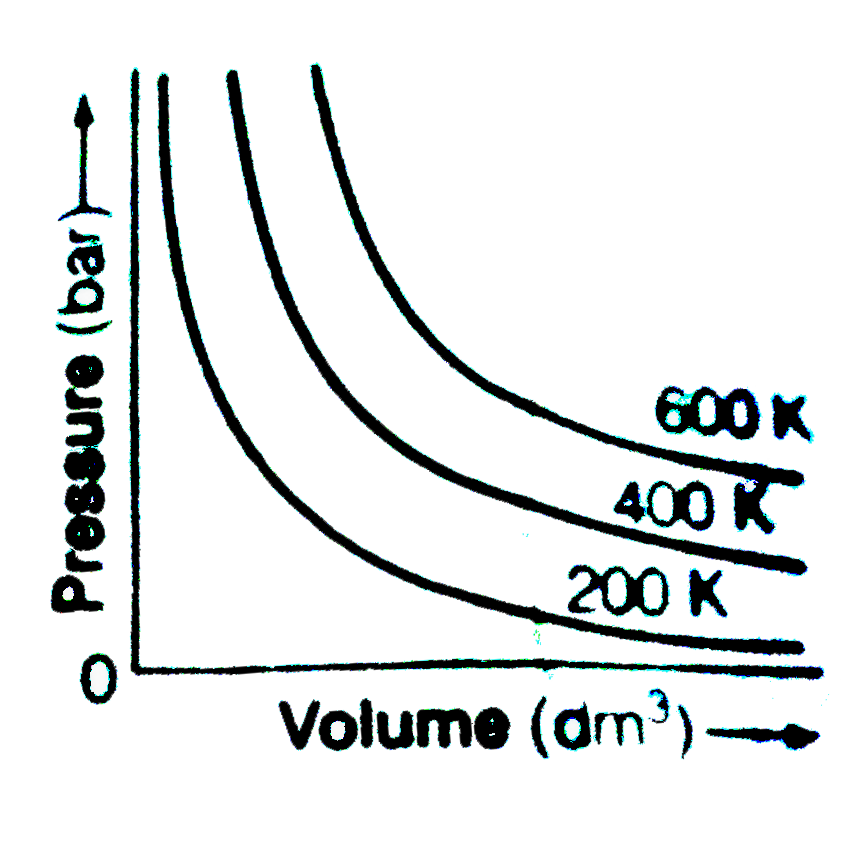 View Solution
View SolutionQuestion 40
Pressure versus volume graph for real gas and are shown in figure. Answer the following question on the basis of this graph.

(i) Interpret the behaviour of real gas with respect to ideal gas at low pressure.
(ii) Interpret the behaviour of real gas with respect to ideal gas at high pressure.
(iii) Mark the pressure and volume by drawing a line at the point where real gas behaves as an ideal gas.View SolutionQuestion 47
Assertion (A) Gases do not liquefy above their critical temperature, even on applying high pressure.
Reason (R) Above critical temperature, the molecular speed is high and intermolecular attractions cannot hold the molecules together because they escape because of high speed.View SolutionQuestion 51
The variation of vapour of different liquids with temperature is shown in figure
(i) Calculate graphically boiling points of liquids A and B.
(ii) If we take liquid c in a closed vessel and heat it continuously. At what temperature will it boil ?
(iii) At high altitude, atmospheric pressure is low (say 60 mm Hg). At what temperature liquid D boils ?
(iv) Pressure cooker is used for cooking food at hill station. Explain in terms of vapour pressure why is it so ?
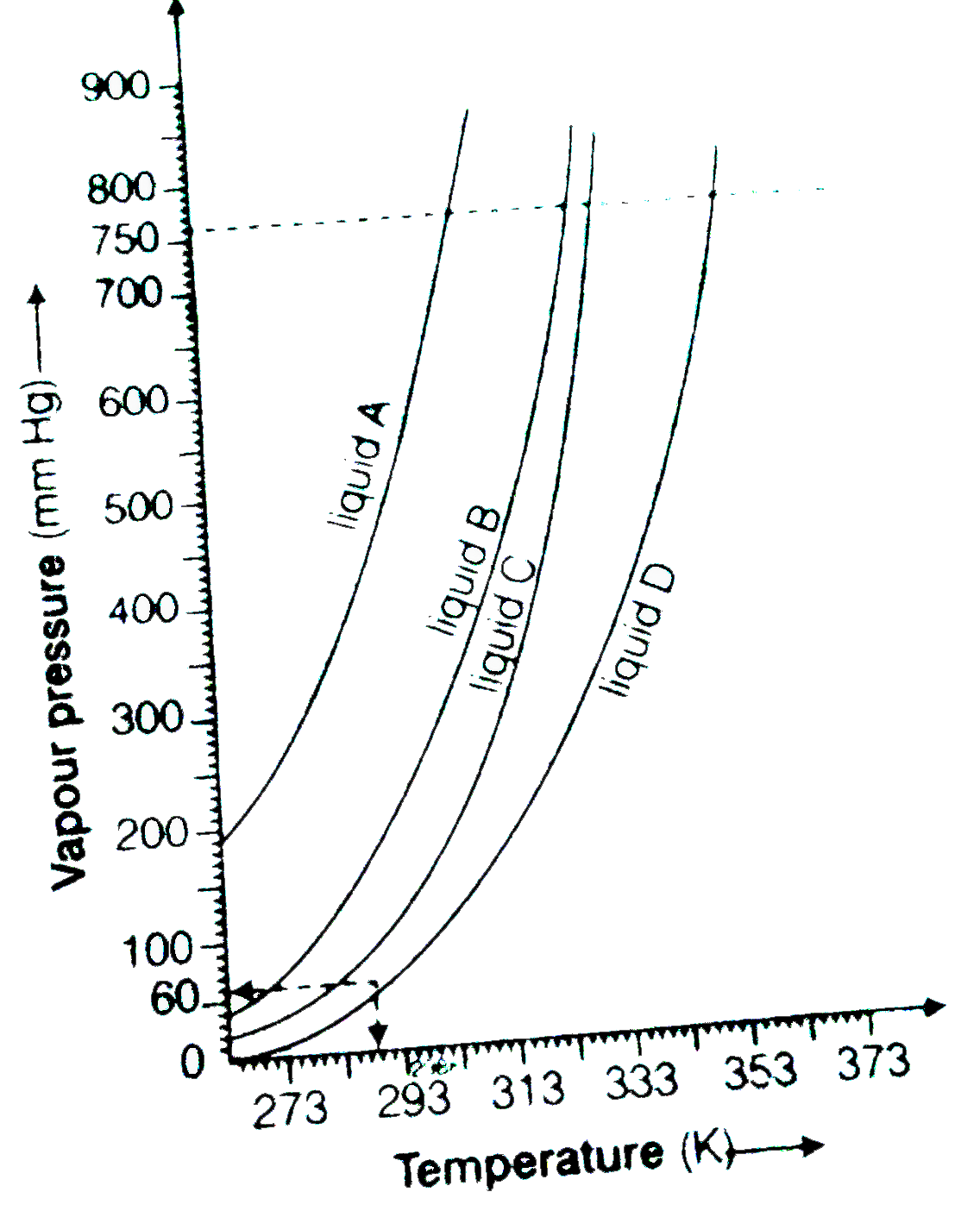 View Solution
View Solution
